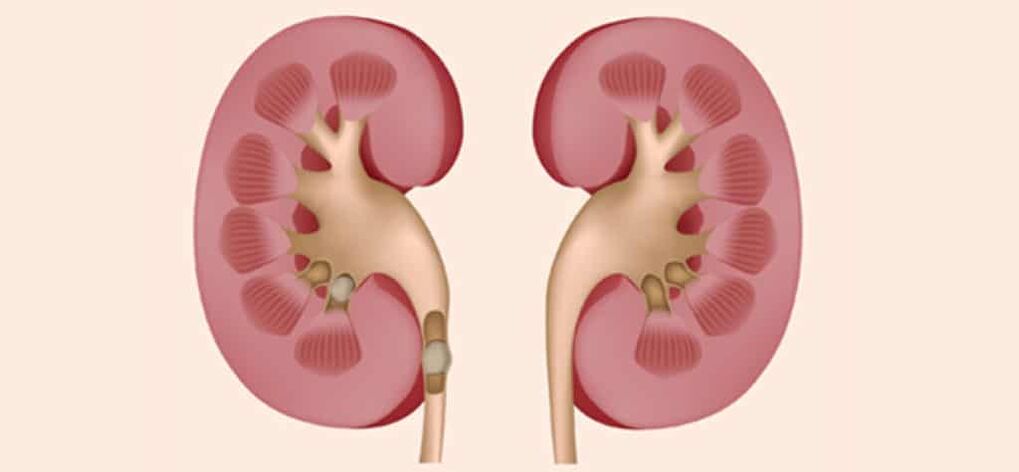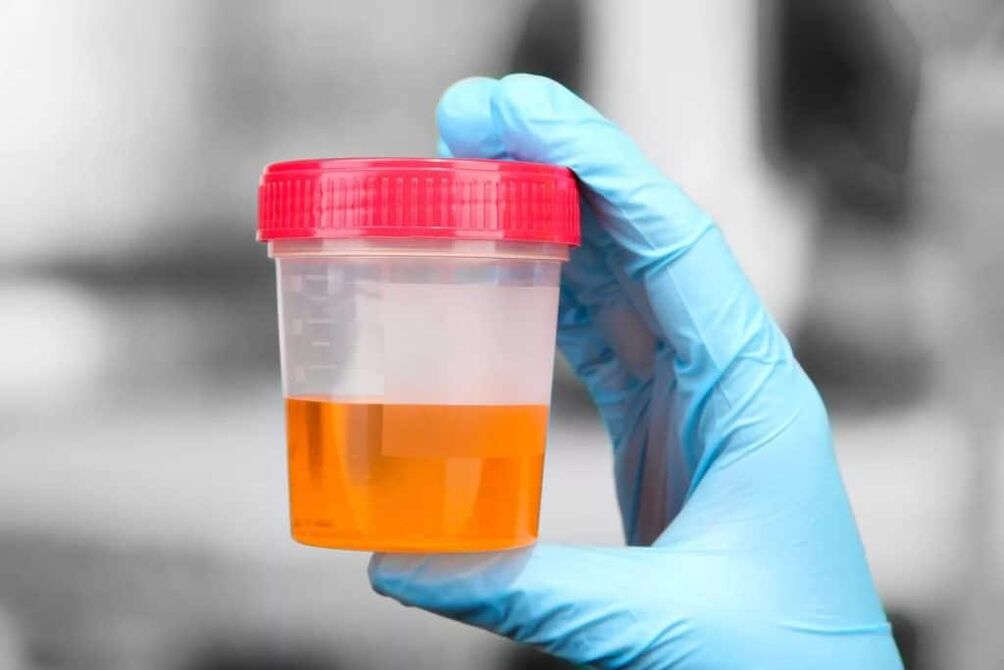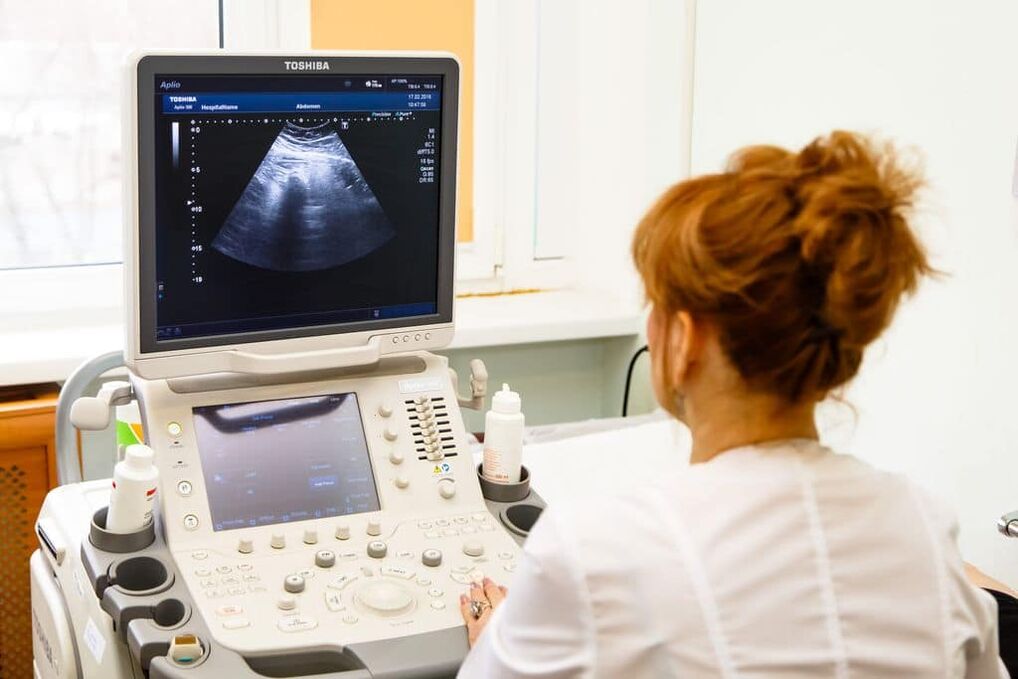Chronic prostatitis is a serious disease that occurs with periodic exacerbations, which requires long-term complex treatment. Inadequate treatment or its absence leads to the development of various complications, one of which is pathological prostatitis, one of the most serious forms of the disease. Cumulative prostatitis develops from atrophic congestive prostatitis and is diagnosed in men over 65 years of age.
Accounting prostatitis
Any form of prostatitis is characterized by inflammation in the prostate gland, which can occur in acute or chronic form. Cumulative prostatitis is a form of inflammation caused by the presence of stones (stones) in the seminal vesicle of the prostate.
Chronic fatty prostatitis is a rare complex inflammation of the prostate gland. It is preceded by many years of inadequate treatment for chronic congestive prostatitis or prostate adenoma.
In most cases, a complication is found in men who tried to treat prostatitis on their own or did not follow the recommendations of the treating physician. Discontinuation of treatment at will, lack of complex therapy or independent uncontrolled medication lead to the development of complications. Quite often, the reckless form of inflammation of the prostate gland develops against the background of concomitant pathologies of the kidneys and urinary system.
The formation of stones in the prostate gland can be due to two factors. The first of these is urolithiasis. In this case, they are talking about secondary or false stones that do not form in the prostate, but migrate to it along a downward path along with the urine. This occurs against the background of a violation of the urinary system and as a result of a decrease in prostate tone, which causes the reverse reflux of urine with stone fragments.
Primary or true stones are formed directly in the prostate. This is due to a chronic violation of organ nutrition. At the same time, salts and phosphates accumulate in the prostate, which, against the background of the thickening of the secretion of the gland, forms dense deposits of salt - stones.

Cumulative prostatitis does not appear immediately. This is usually a consequence of the failure to treat chronic inflammation of the prostate.
Reasons for the development of the disease
The development of prostatitis stone is due to long-term prostate dysfunction or concomitant diseases of the male genital area. Factors that cause the development of this form of the disease can be:
- congestive prostatitis with a chronic course.
- chronic infectious prostatitis;
- BPH;
- malignant neoplasms in the body.
- urolithiasis;
- kidney disorder.
The structure of the stones can be organic and inorganic, their diameter rarely exceeds 4 mm. The organic structure of the stones is due to the stagnation of the prostate secretion, such stones are formed directly in the prostate secretion.
Inorganic stones enter the prostate as a result of urethro-prostatic reflux. This phenomenon occurs when the tone of the prostate gland weakens and consists in the reflux of urine from the urethra into the pores of the prostate. As a result, dense stones are formed, consisting of salts and phosphates, which are excreted from the body in the urine.
Among the factors that predispose to the development of suffocating prostatitis, there is a violation of lifestyle in the context of chronic inflammation in the prostate. This includes an unbalanced diet rich in fatty and heavy foods, lack of regular sex life.
Cumulative prostatitis is diagnosed in men who live with chronic prostatitis for more than 10 years. In many ways, the development of this form of the disease is associated with incorrect or untimely treatment of a hypotonic inflammatory process.

Urolithiasis increases the chance of abnormal prostatitis.
Symptoms of the disease
The symptoms and treatment of chronic prostatitis asphyxia do not differ much from the signs of inflammation in the context of pelvic congestion. Patients' complaints include:
- frequent urge to urinate.
- feeling of heaviness in the rectum.
- pain after urination;
- weakening of power;
- ejaculation disorders;
- blood in urine and semen.
It is the presence of blood in the urine or semen that makes it possible to suspect the accounting form of the disease before visiting the doctor. At the moment of tension of the respective muscles, during ejaculation or urination, the stones move and injure the prostate tissues. As a result, blood is found in the urine.
As a rule, the accounting form of prostatitis is always accompanied by a violation of sexual function. This can manifest as a loss of power and problems with ejaculation. Men often complain about the inability to reach the climax during sexual intercourse.
However, in some cases, suffocating prostatitis may be asymptomatic. This is observed in the formation of small stones.

A feature of this form of prostatitis is the presence of blood in the urine.
Diagnosis of the disease
The diagnosis of asphyxiation of prostatitis is made on the basis of the same tests that reveal chronic inflammation.
To make a diagnosis, you must undergo the following tests:
- rectal palpation of the prostate.
- Ultrasound or TRUS?
- MRI;
- prostate secretion analysis.
On rectal palpation of the organ, the doctor clearly feels the heterogeneity of the prostate gland, which is manifested by the presence of tuberculosis and depression in the organ. If the stones are large, they are clearly felt to the touch. Also, prostate massage in the presence of stones can be painful and be accompanied by the release of blood after manipulation, which is due to damage to the tissues of the organ due to the presence of dense salt deposits.
In the ultrasound or in TRUS, the stones are distinguished by increased echogenicity. Such an examination allows you to accurately assess the location of the stones, their size, contours and even their structure.
In addition, an ultrasound of the kidneys and urethrography may be needed to rule out the secondary nature of stone formation in relation to urinary tract diseases.

On ultrasound, the presence of stones, their location and size are well defined.
Beginning of treatment
Treating asphyxiation of the prostate is a long process. The treatment aims to stop the inflammation, to alleviate the symptoms, to destroy the stones and to prevent their re-formation. As a rule, the course of treatment lasts at least a month.
The treatment of prostatitis stone begins with symptomatic treatment, which is based on the use of non-steroidal anti-inflammatory drugs, antibiotics and alpha-blockers. Non-steroidal anti-inflammatory drugs (NSAIDs) relieve pain and improve well-being. Antibacterial treatment is performed only if asphyxia develops against a background of infectious inflammation in the prostate and pathogenic microorganisms are detected during the examination. Preparations of the alpha-blocker group are indicated for the development of urinary disorders. These drugs relax the bladder and make it easier to urinate.
Physiotherapy plays an important role in the treatment of asphyxia of the prostate, with the aim of improving the nutrition of the prostate. Electrophoresis, magnetotherapy, shock wave therapy are practiced.
If the stones are large, it is possible to perform an operation to remove them. Minimally invasive methods and laser surgery are commonly used.

Medium-sized stones are successfully crushed by laser. This procedure is performed in outpatient clinics, is completely painless and does not take more than 20 minutes. If there are many stones, a procedure is prescribed.
With prostatitis stone, prostate massage is prohibited, as this leads to damage to the tissues of the organ when the stones are moved.
How to cure prostatitis stone - depends on the size of the stones and the symptoms of the disease. With small stones, the treatment is carried out with the help of drugs and physiotherapy, with the aim, among other things, of crushing stones. Large stones are surgically removed. The operation is performed under anesthesia.
Possible Complications
Cumulative prostatitis is dangerous with the risk of developing an abscess in the prostate gland. Such a complication requires immediate hospitalization and surgery, otherwise the abscess may open on its own, which leads to the development of sepsis.
Lack of proper and timely treatment can lead to the development of paraproctitis. This disease is characterized by inflammation of the subcutaneous tissue that surrounds the rectum. Purulent inflammation can have dangerous consequences, up to sepsis and infection of the whole organism.
One of the most common complications in the absence of timely treatment of prostatitis stone is erectile dysfunction. Often, the presence of stones in the prostate leads to infertility.
The possibility of complications is determined during the examination and diagnosis. In addition, during the treatment of passive prostatitis, the patient undergoes regular ultrasound and prostate secretion analysis to evaluate the effectiveness of the selected treatment regimen.

The most common consequence is a breach of power.
Disease prevention
Although cumulative prostatitis is curable, the treating physician always warns of the risk of recurrence of the stones. To prevent this from happening, a man must follow certain recommendations.
Prevention of relapse is limited to a balanced diet, regular sexual activity. Fatty and spicy foods that negatively affect the functioning of the urinary system should be avoided. Be sure to break bad habits and exercise regularly to prevent stagnation of blood and lymph in the pelvic organs.
Since passive prostatitis is a more common complication of chronic prostatitis, specific prevention of the disease is limited to timely treatment of prostate inflammation. You should follow your doctor's recommendations and do not try to treat prostatitis on your own.
Quite often, men who experience this disease do not pay proper attention to the symptoms, hoping that the discomfort will go away on its own. As a result, prostatitis is not treated and can go into a latent form for many years, manifesting periodically with exacerbations. It is important to understand that a timely visit to a doctor and adequate treatment will alleviate the disease in a few months.
Another common mistake that leads to the development of asphyxiation of prostatitis is to stop treating chronic inflammation with the first improvement. As a result, the disease remains untreated and will certainly be felt when immunity is reduced.
So, to avoid the formation of stones in the prostate, you should follow a few rules:
- consult a doctor in a timely manner.
- strictly follow the instructions of a specialist.
- do not let the disease take its course.
Every man who has had prostatitis should have an annual examination by a urologist.






































